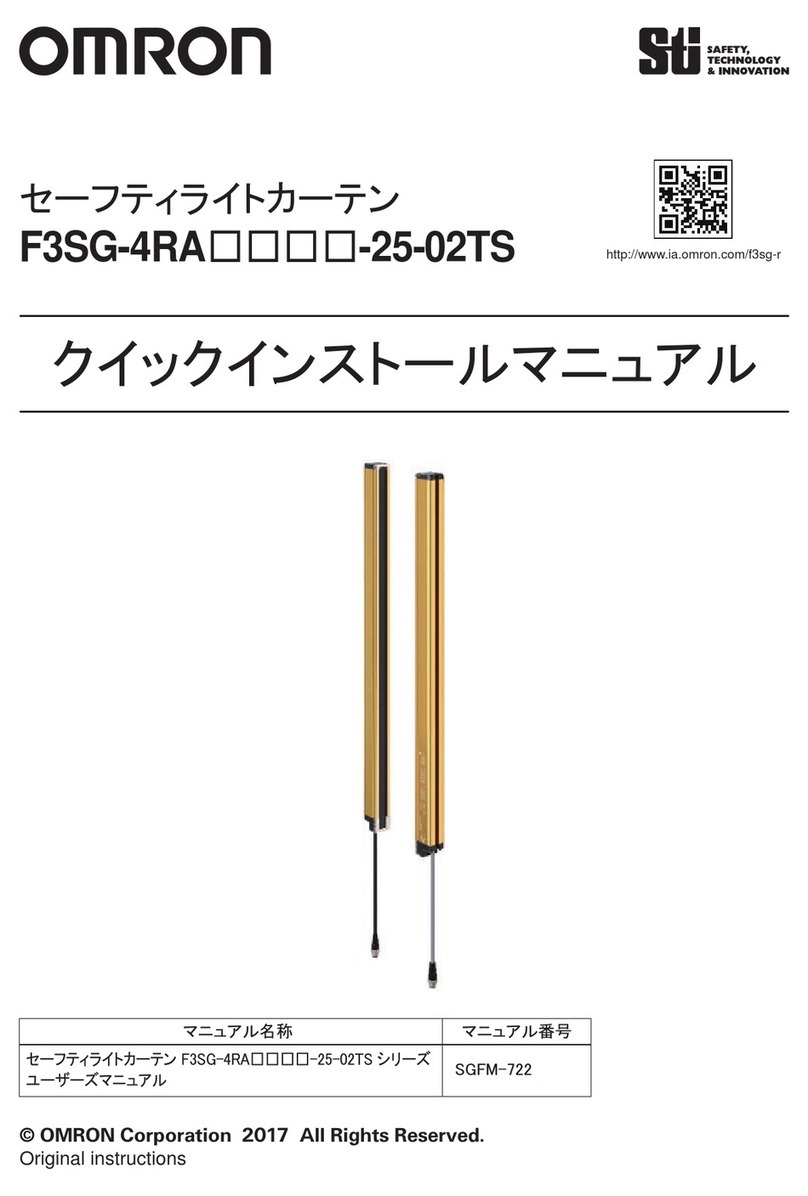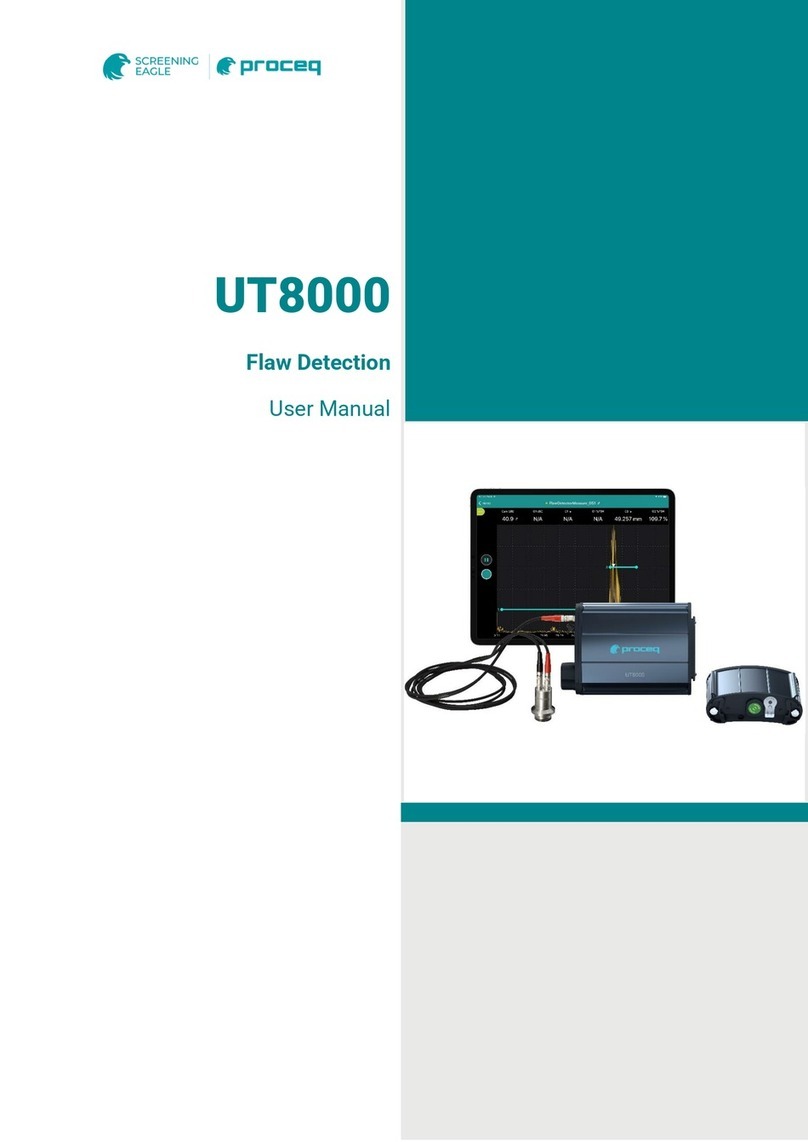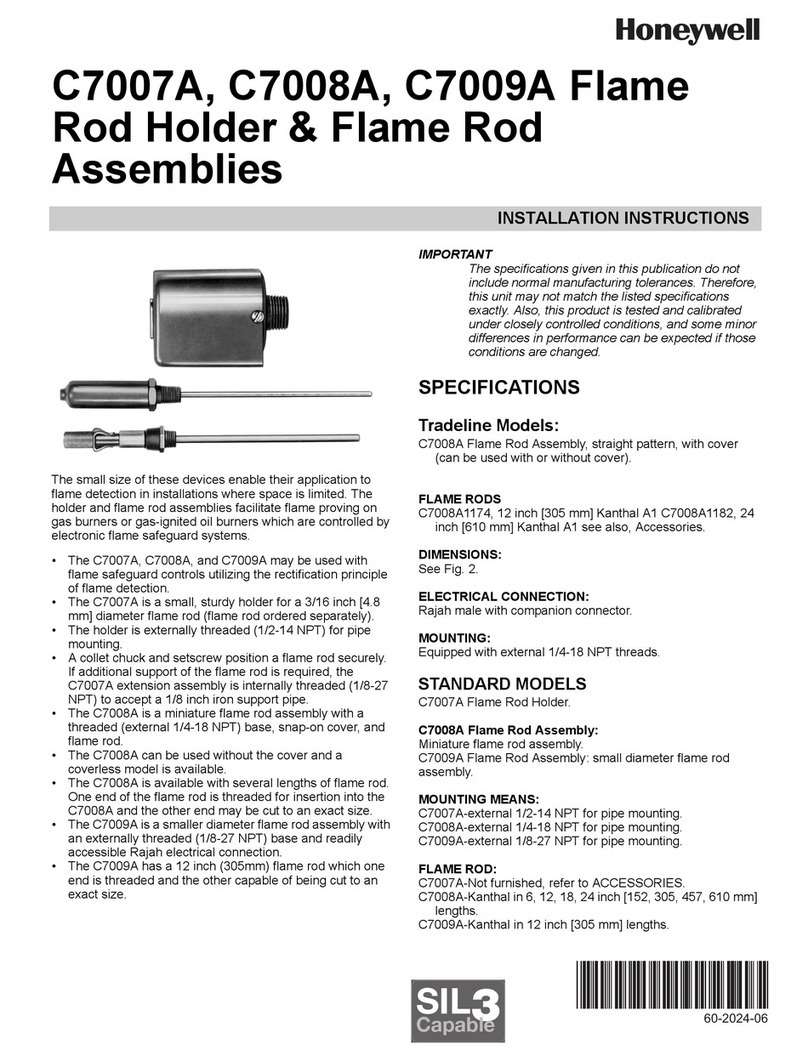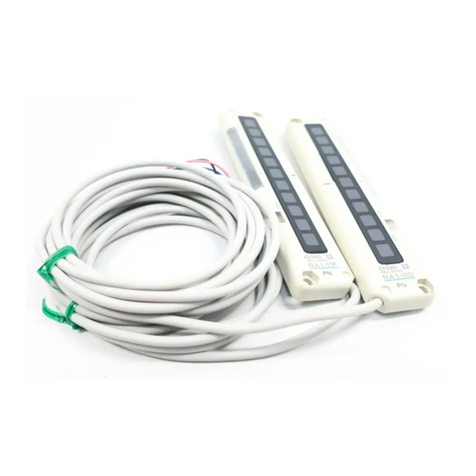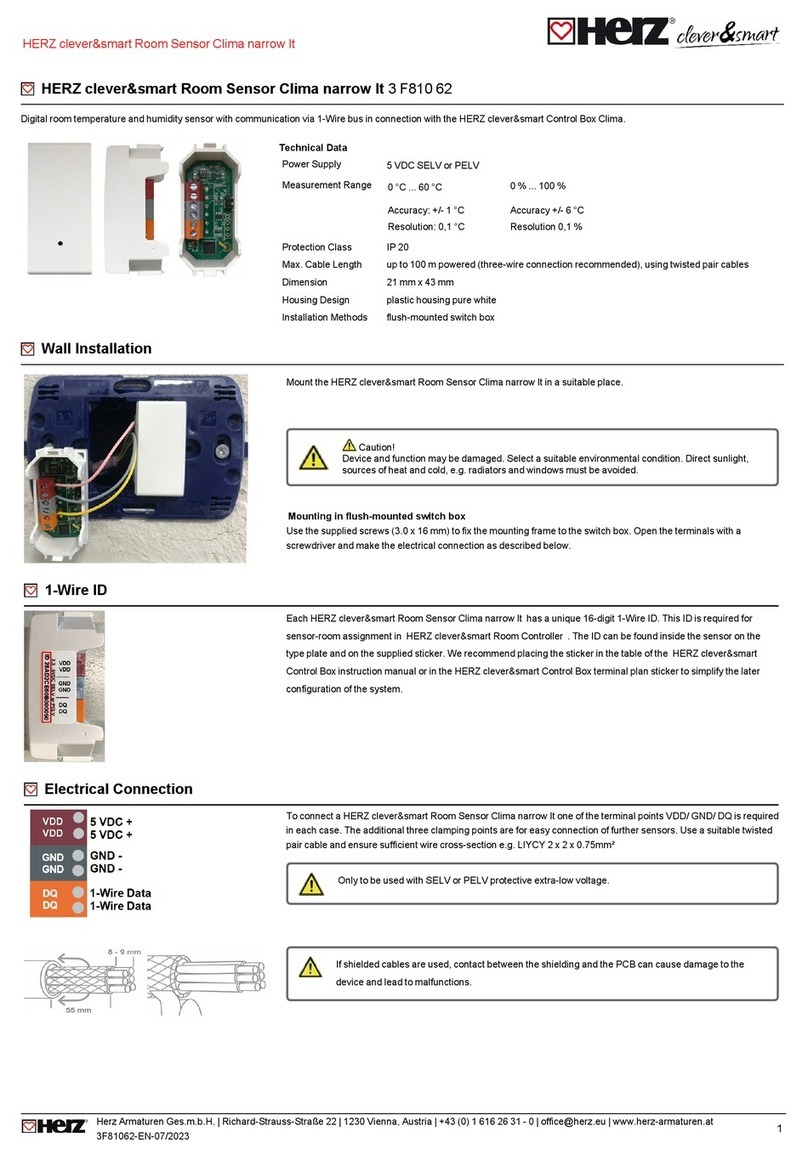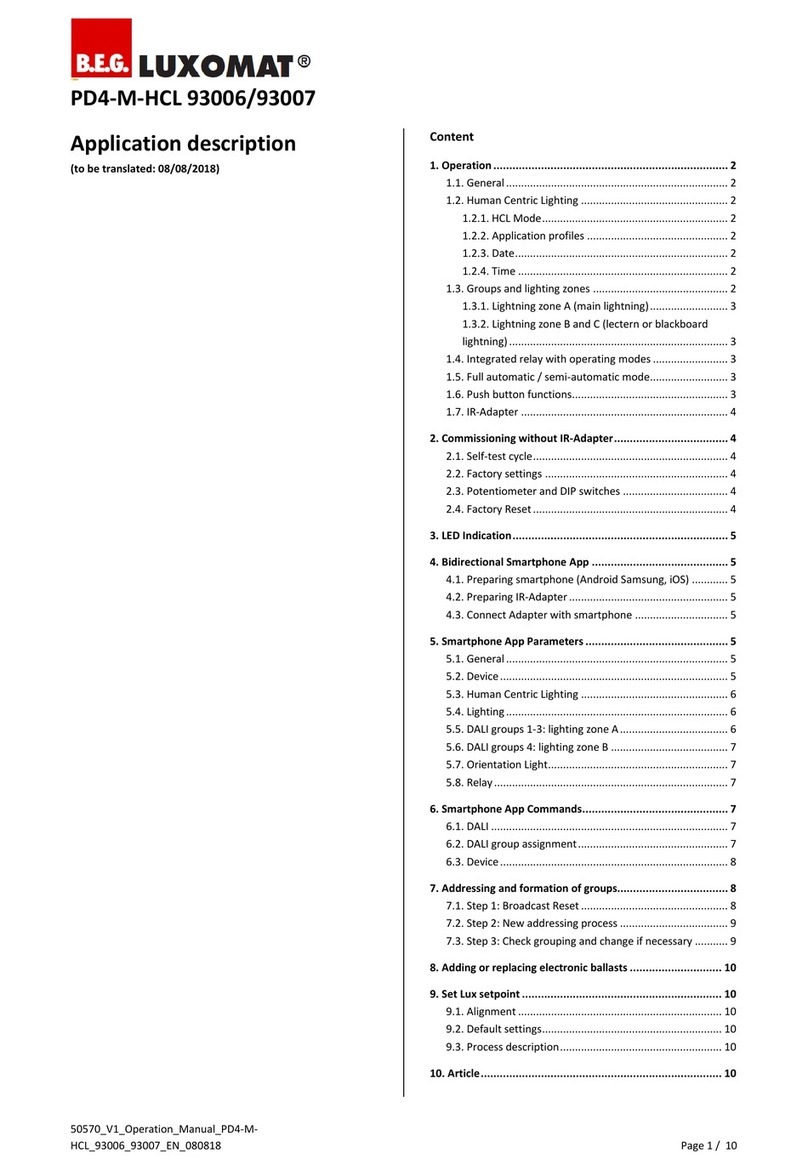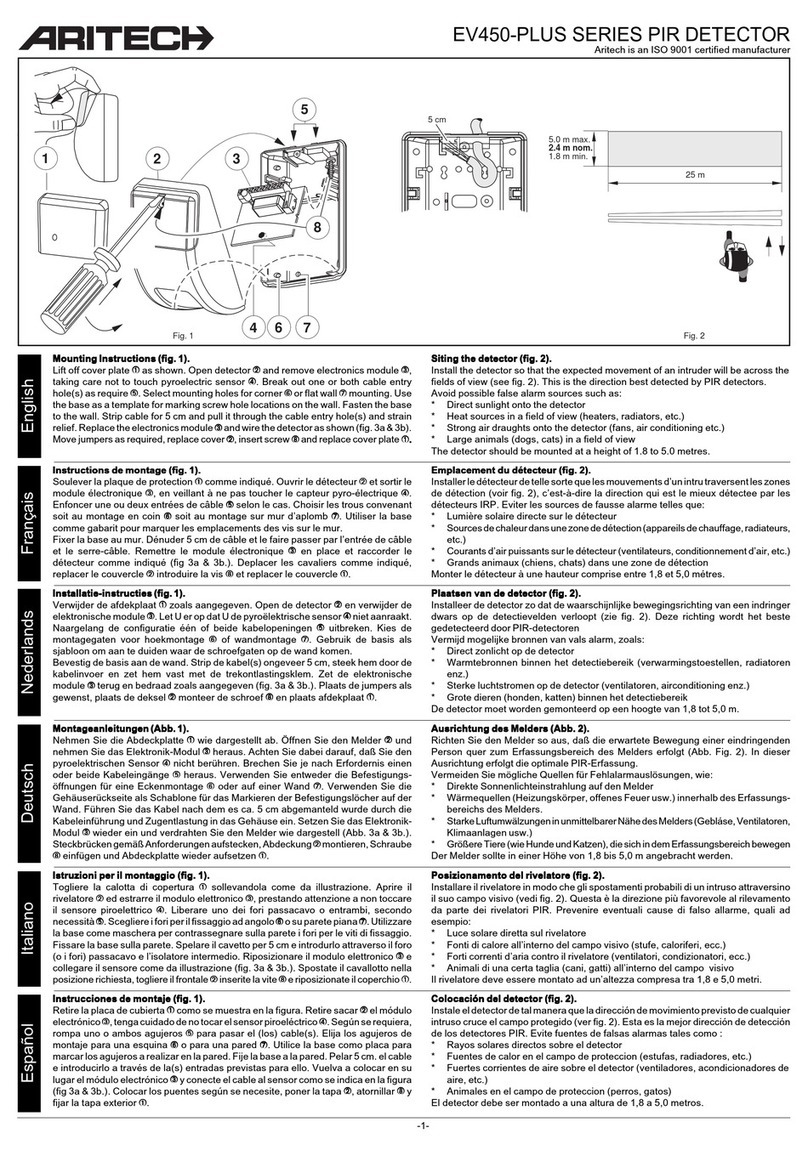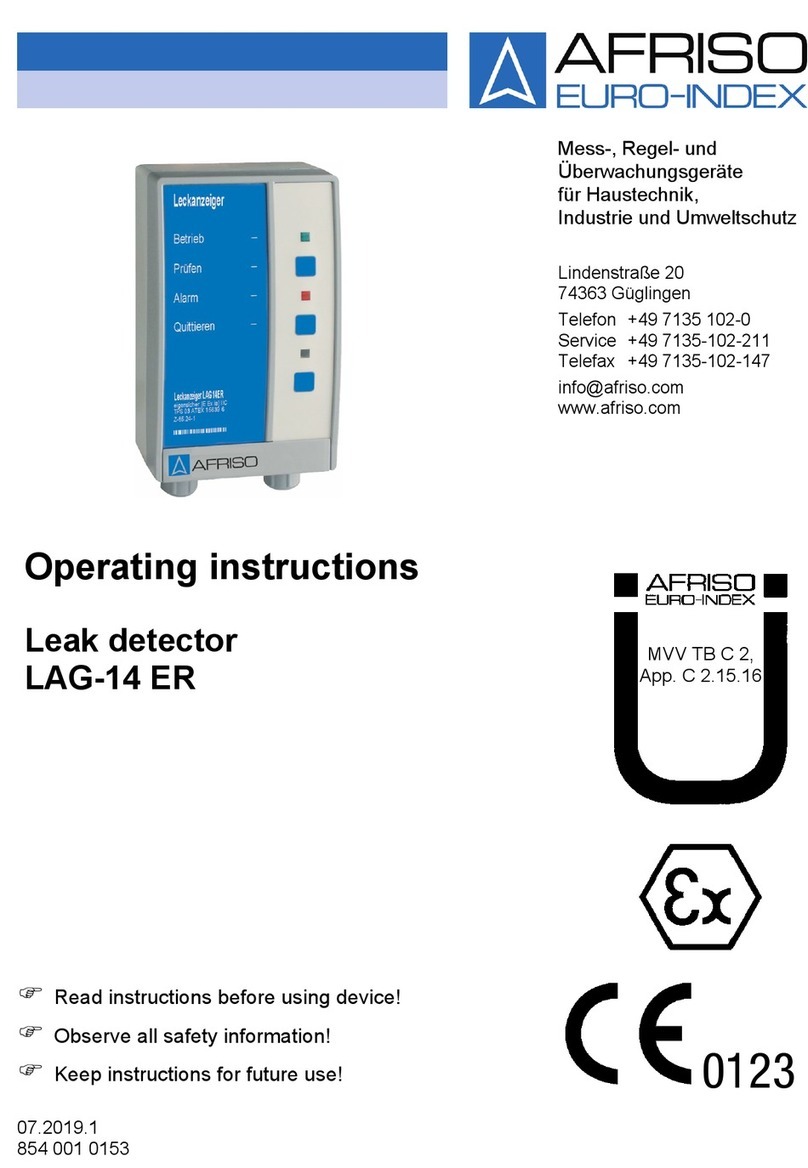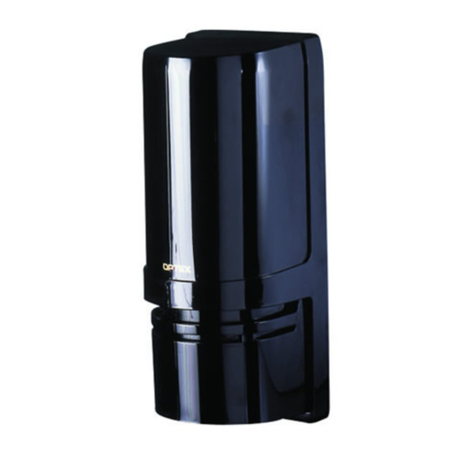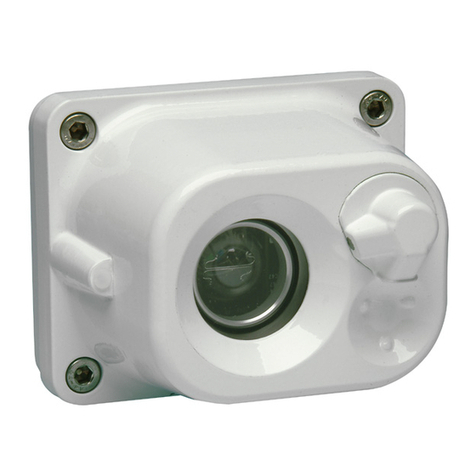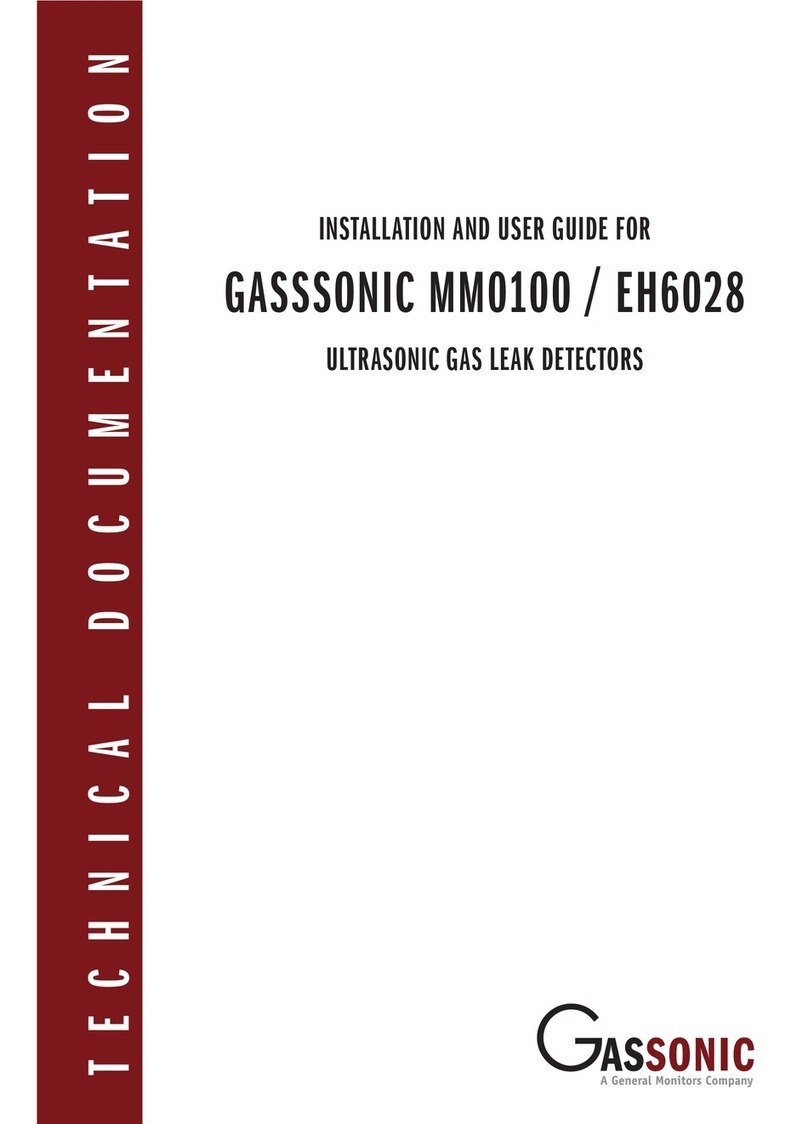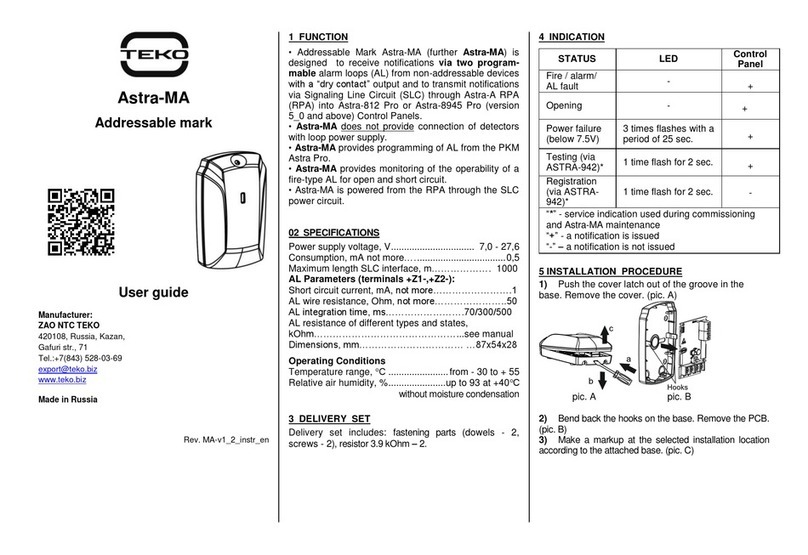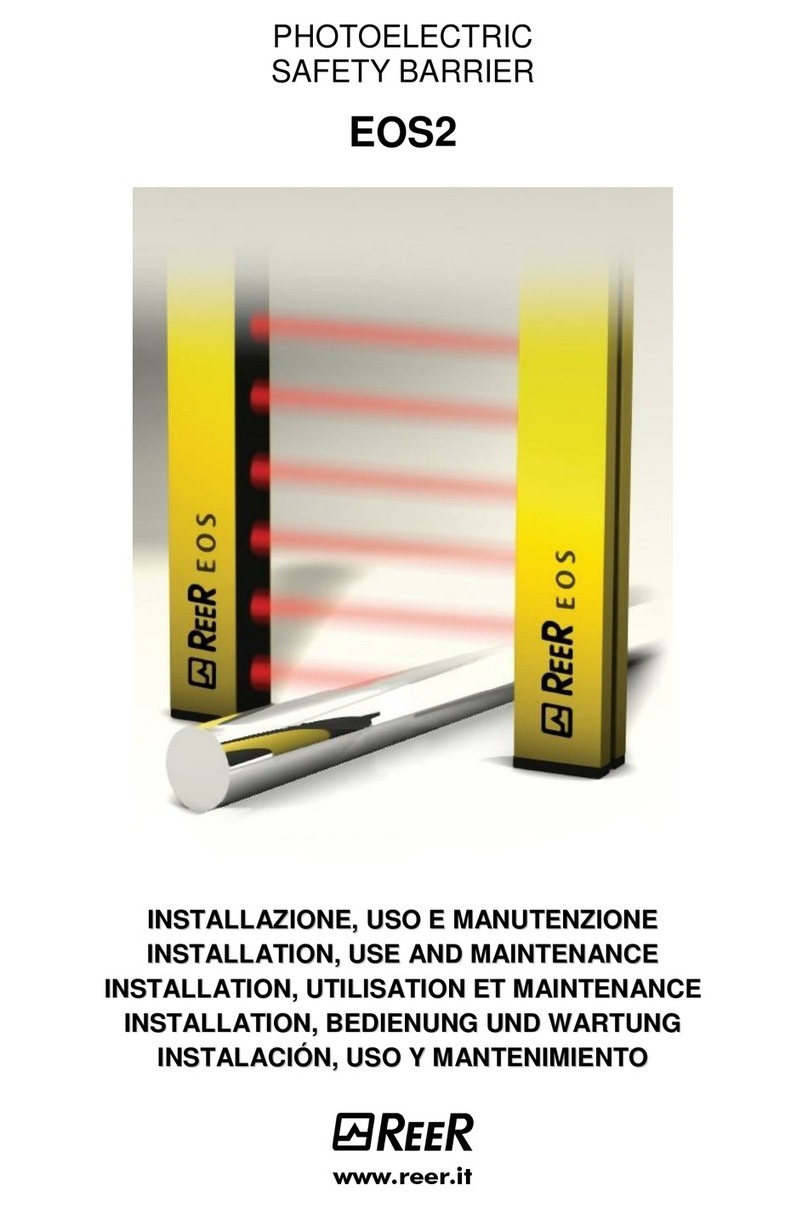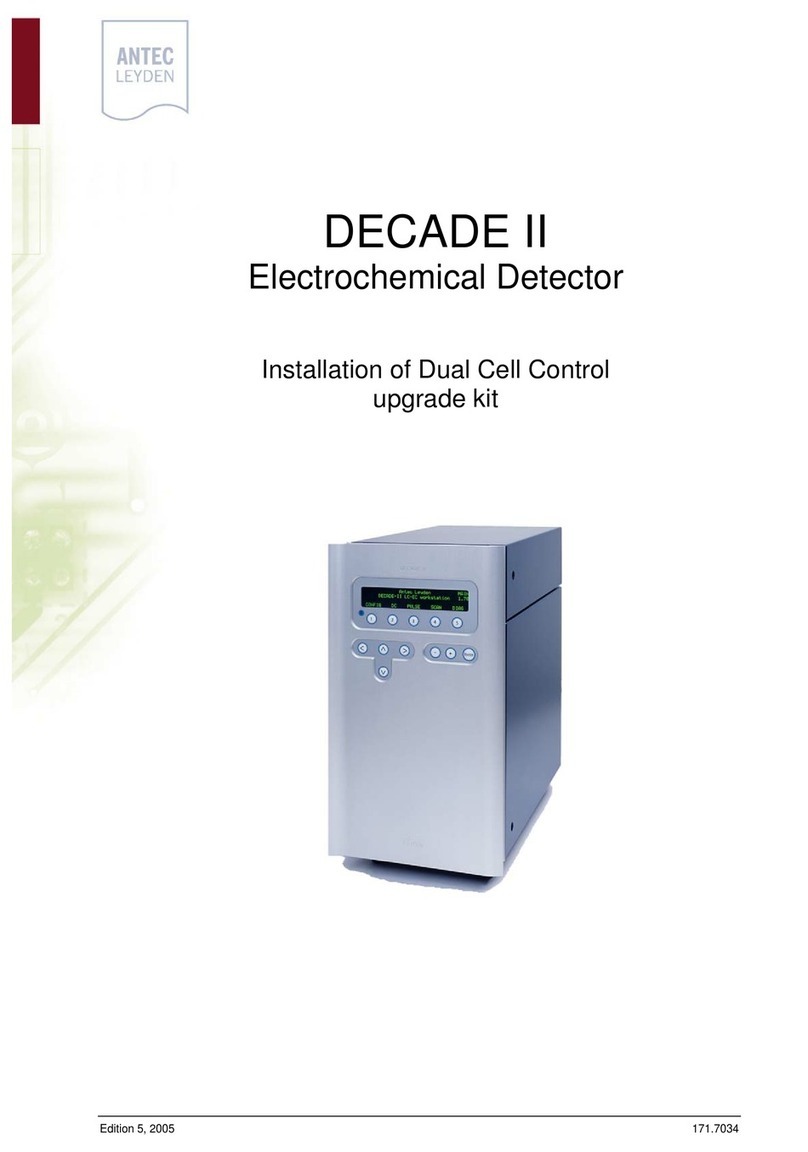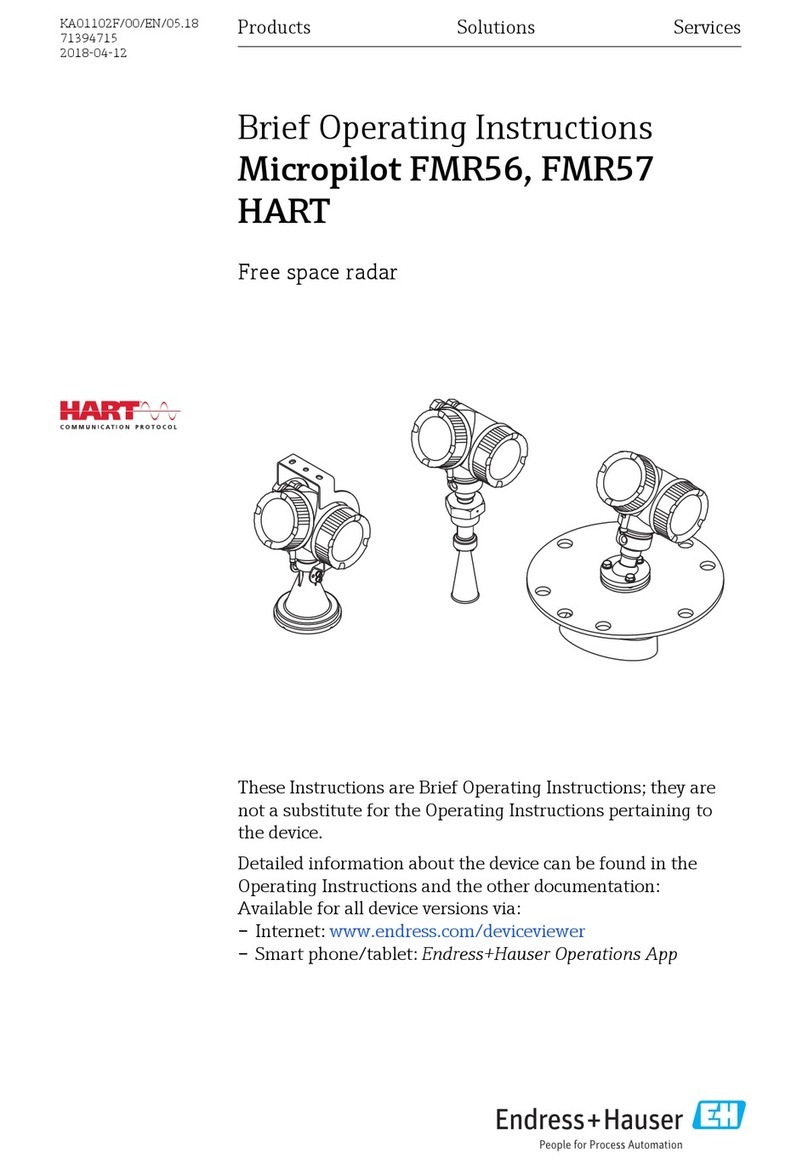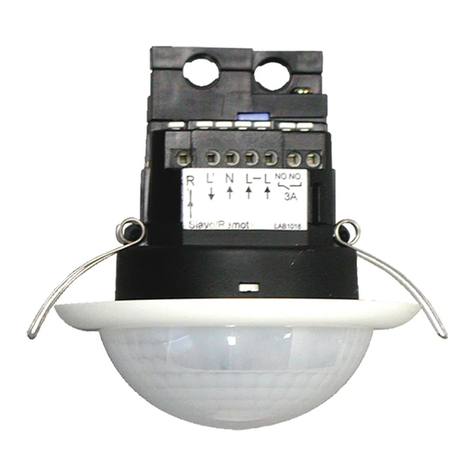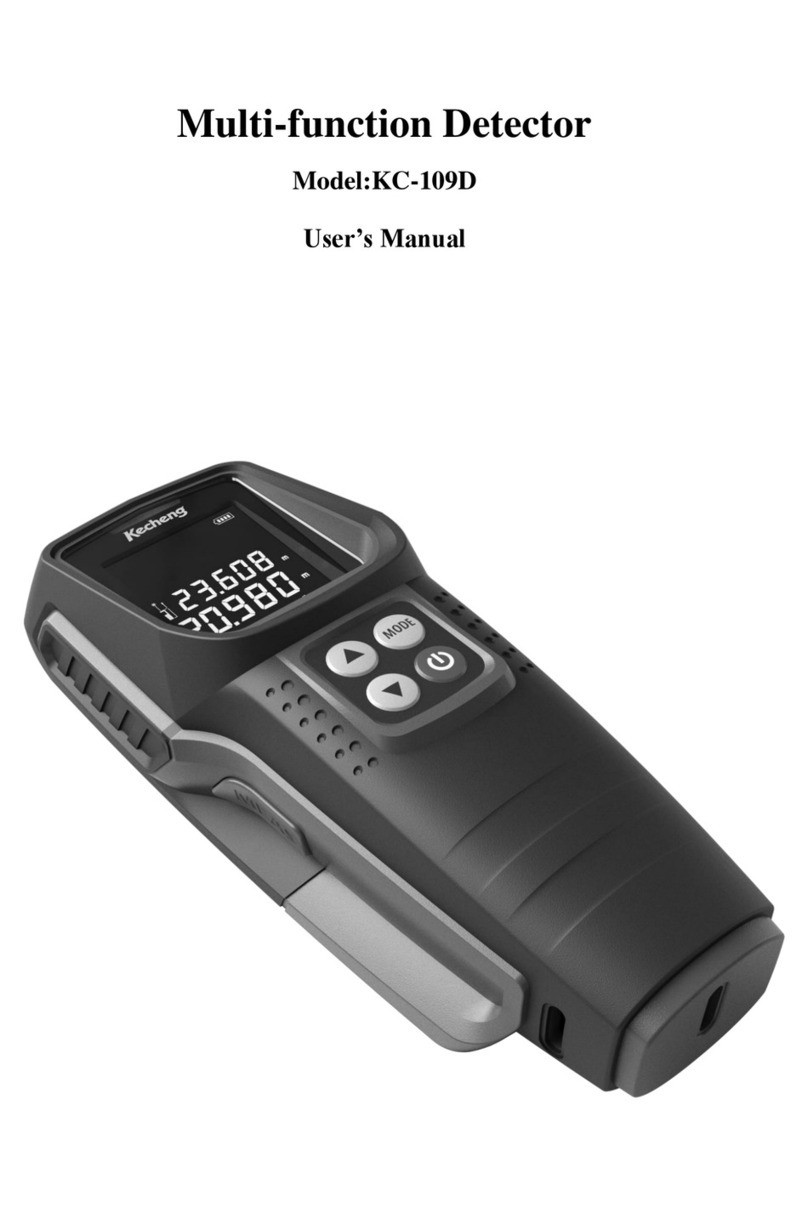
GASSONIC OBSERVER-i
v
6.7.17.Comm 2 Address (12H) ...........................................................................................................66
6.7.18.Comm 2 Baud Rate (13H) .......................................................................................................66
6.7.19.Comm 2 Data Format (14H) ....................................................................................................66
6.7.20.Software Rev Minor (15H)........................................................................................................67
6.7.21.Reset Alarm (16H) ...................................................................................................................67
6.7.22.Sub Mode (17H).......................................................................................................................67
6.7.23.Acoustic Test (18H)..................................................................................................................67
6.7.24.HazardWatch (19H) .................................................................................................................67
6.7.25.Relay State (1AH) ....................................................................................................................68
6.7.26.Alarm Latch (1BH)....................................................................................................................68
6.7.27.Relay Energize (1CH) ..............................................................................................................68
6.7.28.HART Enable (1DH).................................................................................................................68
6.7.29.HART Test (1EH) .....................................................................................................................68
6.7.30.Cal Abort (1FH) ........................................................................................................................69
6.7.31.Comm 1 Total Illegal number of registers Errors (20H) ...........................................................69
6.7.32.Comm 1 Bus Activity Rate % (21H) .........................................................................................69
6.7.33.Comm 1 Function Code Errors (22H) ......................................................................................69
6.7.34.Comm 1 Starting Address Errors (23H) ...................................................................................69
6.7.35.Comm 1 Total Receive Errors (24H)........................................................................................69
6.7.36.RXD CRC Errors (25h).............................................................................................................69
6.7.37.RXD CRC Errors (26h).............................................................................................................69
6.7.38.Comm 1 Parity Errors (27H) ....................................................................................................69
6.7.39.Comm 1 Overrun Errors (28H).................................................................................................69
6.7.40.Comm 1 Framing Errors (29H) ................................................................................................70
6.7.41.Comm 1 Total UART Receive Errors (2AH) ............................................................................70
6.7.42.Factory Default (2BH) ..............................................................................................................70
6.7.43.Comm 1 Clear error (2CH).......................................................................................................70
6.7.44.Clear Stats 1(2D) .....................................................................................................................70
6.7.45.HART Current (2E)...................................................................................................................70
6.7.46.HART Present (2F) ..................................................................................................................70
6.8.Event Logging (30H – 5FH) .....................................................................................................71
6.8.1.Faults........................................................................................................................................71
6.8.2.Alarm........................................................................................................................................71
6.8.3.Calibration ................................................................................................................................71
6.8.4.Maintenance.............................................................................................................................71
6.8.5.User Data (60H – 6F)...............................................................................................................78
6.8.6.Comm 2 Bus Activity Rate % (71H) .........................................................................................78
6.8.7.Comm 2 Function Code Errors (72H) ......................................................................................78
6.8.8.Comm 2 Starting Address Errors (73H) ...................................................................................78
6.8.9.Comm 2 Total Receive Errors (74H)........................................................................................78
6.8.10.RXD CRC Errors Hi (75H)........................................................................................................78
6.8.11.RXD CRC Errors Lo (Same as Hi) (76EH) ..............................................................................78
6.8.12.Comm 2 Parity Errors (77H) ....................................................................................................78
6.8.13.Comm 2 Overrun Errors (78H).................................................................................................79
6.8.14.Comm 2 Framing Errors (79H) ................................................................................................79
6.8.15.Comm 2 Total Receive Errors (7AH) .......................................................................................79
6.8.16.Modbus Cal Error (7BH)...........................................................................................................79
6.8.17.Clear Comm 2 UART Errors (7CH)..........................................................................................79
6.8.18.Clear Comm 2 Modbus Errors (7DH).......................................................................................79
6.8.19.Input Voltage (8DH) .................................................................................................................79
6.8.20.Detection Mode (D9H) .............................................................................................................79
6.8.21.Enhanced Analog Output Mode (DAH)....................................................................................79




















